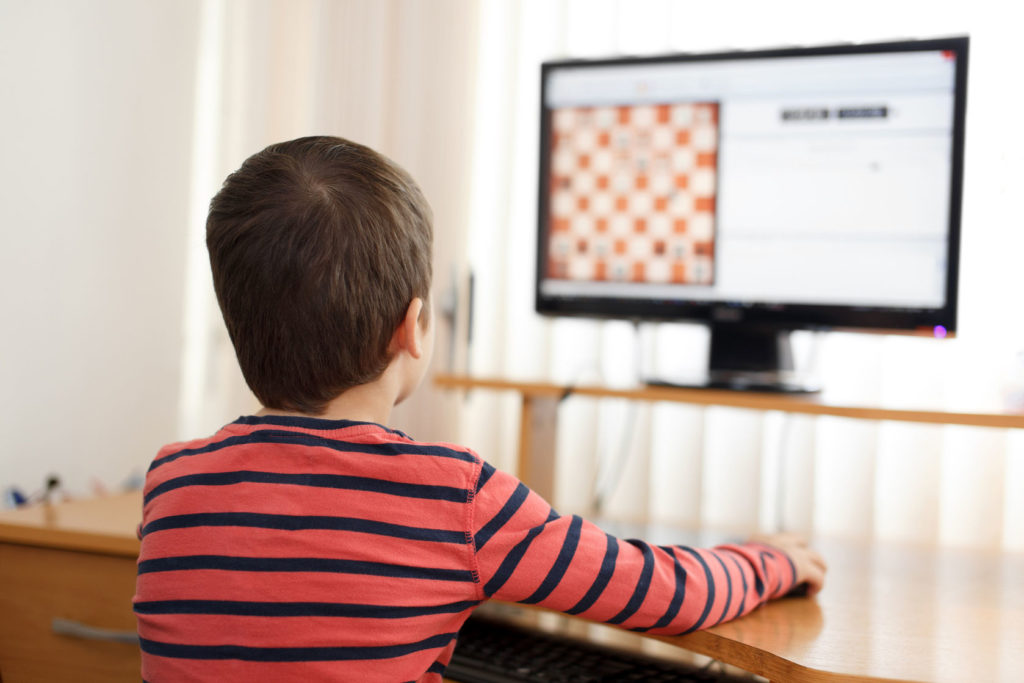
Most of us are well aware that gaming can provide us with more than simple entertainment. Video games have honed motor skills, helped us exercise, and even allowed scientific researchers to crowdsource major data processing initiatives. Above all, gaming has shown consistent, measurable results when applied to education. Here, we take a look at the history and current state of educational video games.
Humble Beginnings
In the earliest days of game development, software publishers eagerly sought great educational video games for kids to bundle with other games and productivity tools. With the right variety of software offerings, consumers could be convinced that the emerging personal computer was a great investment for the whole family, nothing like the heavy scientific machinery once found only in universities and successful places of business. Before home computer hits like Karateka and Prince of Persia, Jordan Mechner recalls working on learning games like ABsCenes with Roger Schank, PhD for Compu-Teach, a story he tells in The Making of Karateka: Journals 1982 -1985.
“NOBODY remembers ABsCenes,” Mechner joked on Twitter.

The learning category stayed strong as dedicated home consoles appeared, tanked, and re-emerged to stay during the 1990s. Console and computer manufacturers united to extol the value of interactive educational software. Many players would agree that this period indeed produced many of the best educational video games, including Mario’s Time Machine, Where in Time is Carmen Sandiego?, and yes, we’re going to include it, Microsoft Encarta MindMaze.
As the internet reached residential customers and swiftly defeated Encarta, web-based educational games became a mutually beneficial way to reach consumers for networks like PBS, media outlets like Yahoo, and whatever Candystand was. As the information superhighway further developed–and PCs picked up CD-ROM power–games boasting varying degrees of educational value reached critical mass.

Playing to Learn in the Present Day
Picking up where generations of game systems left off, modern consoles have maintained solid offerings for learning players. PlayStation educational games like Rayman Brain Games and Xbox products such as Kinect Nat Geo TV promise to make sure controller time goes to good use. On the desktop, Minecraft has changed how kids play, think, and learn, at home and even in the classroom.
While consoles and computers have remained steady since the mid 1980s, new ways to game have emerged, and with them, new ways to learn. The mobile gaming platform started with Nintendo’s Game Boy and Sega’s Game Gear (unless you want to include older toy handhelds and watches), evolving until it merged with the iOS and Android devices that currently make the world go around. Tiny devices and effortless touch controls have helped the mobile platform reach younger gamers than Xbox and PlayStation games could, and with fantastic results.

Educational games have also led to a growing field in which gaming technology, such as new VR equipment, is increasingly used for non-gaming educational applications. In one particularly bizarre recent example, lottery winners of more than $25,000 in Quebec are being offered specialized counseling sessions using virtual reality headsets. Meanwhile at Stanford University, researchers at the Virtual Human Interaction Lab have begun conducting experiments meant to determine whether they can improve a participant’s empathy by having them “swap perception” with people of other ages, genders, and abilities. If nothing else, there are already studies out there that have confirmed video games improve creativity and stimulate imagination.

“We are entering an era that is unprecedented in human history, where you can transform the self and experience anything the animator can fathom,” Stanford’s lab director, Jeremy Bailenson, told Wired.
So, what does the future hold? It’s safe to say we will see virtual learning environments emerge soon, through the use of virtual reality headsets. Students may soon learn, interact, and play, without ever really seeing one another in person, moving us ever closer to the world of Ernest Cline’s Ready Player One. If artificial intelligence continues to develop, we may even see educational video games learning how to teach us more effectively, based on our own interaction with their material. Here’s hoping they ignore every sci-fi premise ever and act in our best interest.
Did we miss your favorite educational game? Sound off!



